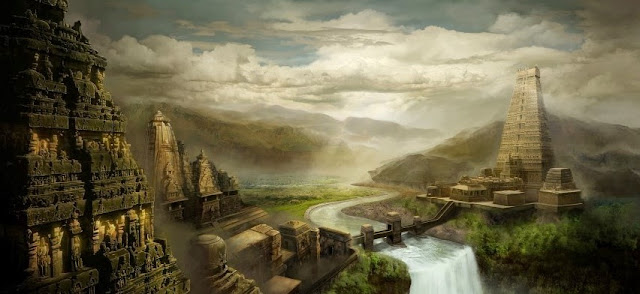"Kshathathu thrayethe ithi kshethra:” these significant words mean that “what saves a man from a ruined state is the holy temple, which contains the presence of God.
The ancient Temples in India, were built as a very deep science. They were not created for worship.If the basic aspects of the temple like, the size and shape of the idol, the mudra that the idol holds, the parikrama, the garbha griha, and the mantras used to consecrate the idol are properly matched, a powerful energy system is created at that place.
In Indian tradition, there had never been a system like, if you go to a temple, you must worship and give money and ask for blessing. Traditionally, the custom was that,if you go to the temple, you must sit for a while and come. You are required to sit there because there is a field of energy that has been created. Spending some time at a consecrated place was a way of recharging yourself with very positive vibrations of life so that you go into the world with a different perspective. The temple was not created as a place of God or a place of prayer. No one was ever allowed to lead a prayer. It was created as a place of energy where everyone could go and make use of it or more like, a tool to experience the divine,which is the source of creation.
Hindu way of life is, with the Hindu, there is no “ism” because it is a geographical and cultural identity. Anyone born in the land of Indus is a Hindu. There is no particular belief system, god or ideology which you can call as the Hindu way of life. Whatever you do in this culture is Hindu.In the Hindu way of life, the only important thing in human life is his liberation or Moksha. Hence, the temples with consecrated idols in ancient India were built adhering to this philosophy.There is a whole science of idol-making where a certain form is created with a particular material and energized in a certain way. Different idols are made in different ways where they relocate or rearrange the chakras or energy-centers in certain places to make them into completely different possibilities. Idol-making is that science through which you manifest the energy in a particular way so that your quality of life can be enhanced.
In this culture since Moksha was held as the most important thing, it does not matter what you are eating, how you are or how long you live, at some point, a need will come that you want to get in touch with the source of Creation. If that possibility is not created across the planet and is not available to every human being who seeks, then society has failed to provide true well being for a human being. It is with this awareness that in Indian culture, every street had at least one temple; because even a few meters should not pass without there being a consecrated space. The idea was not to create one temple versus the other, the idea was that nobody should walk in a space which is not consecrated; nobody should live in a space which is not consecrated. The temple was always built first, and then houses were built.
Concept of Temple design:
The great concepts behind a temple design is awe-inspiring . The interior or the `Garbha Griha’ (inner chamber of sanctum sanctorum) symbolizes the mystery of the universe and the dim burning light there represents the spirit behind the veil of mystery.
The two concepts associated with the temple are the Sthoola Sarira (gross body) and Sookshma Sharira (subtle body), according to Viswakarmaneeyam, a famous treatise on architecture.
The sacred space within the outer wall of the temple,also called Pancha Prakaras represents the body part or the "Sthoola Sarira" of the principal Deity. Garbha Griha or inner sanctum corresponds to the head of the deity, the Arthamandala (the space where Bali Peetas of deities are located) His face, the Namaskara Mandapa (where Vedic chanting is done), His throat or neck, the inner Pradakshina Vazhi ,Nalambalam ,Thidappalli (Temple kitchen) etc otherwise known as Anthahara or His hands, the Vilakkumadam and the area within the outer Balikkallu (Madhyahara or third enclosure with a galaxy of lamps) His belly, the Maryaada or the outer wall as knees and ankles and the Gopura (tower at the entrance of a temple) His feet.

The "Sookshma Sarira" concept related to the idol is based on Aadhara Chakras mentioned in yogic literature. They are Mooladhara Chakra, Swadhishtana Chakra, Manipooraka Chakra, Anachatha Chakra, Aajna Chakra and Sahasrara Chakra. These Chakras are centers of vital force. The various units of the Prathista (idol) symbolize these Chakras. For eg. Aadharasila symbolises the Mooladhara and Swadhishtana Chakra, Nidhi Kumba symbolises Manipooraka Chakra, Padma represents Anaatha Chakra, Koorma represents Prana Sakthi, Yoga Nala symbolizes Visudhi Chakra and Napumsaka Sila symbolises the Aajana Chakra.
So the ancient temples in India can be seen as carefully calibrated energy spaces to enhance human life in a phenomenal way.
Do visit http://devaayanam.in/ to find out more about the great temples around you.





good post on temples..congratulations team devaayanam.
ReplyDeleteWorth reading..
ReplyDelete